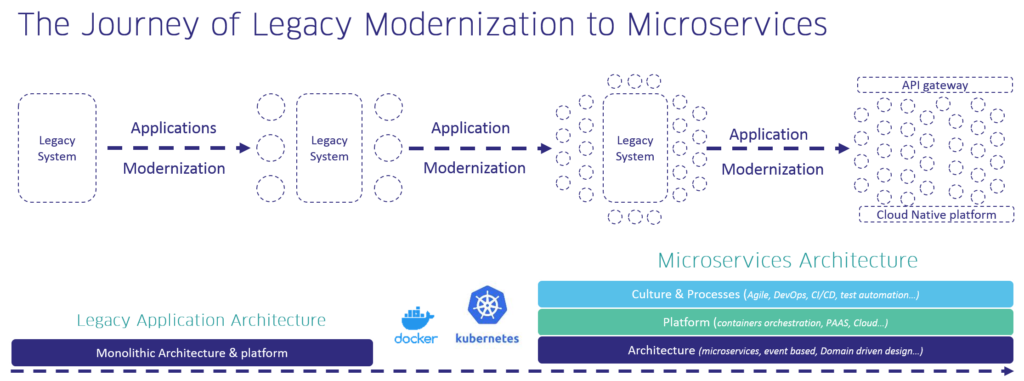
Microservices & The Telecom Industry
- Posted by Farida Eltomy
- On September 21, 2022
Recently microservices have been getting considerable attention from software developers and architects, as the urge to build scalable applications that could be easily deployed and maintained became a necessity for not only tech companies, but also a multitude of industries as technology continues to invade our world.
Companies used to follow an overly complex approach of building applications by defining modules that encapsulate different domain objects and events, trying to abstract concepts and separate concerns, but at the end of the day they’re packaged and deployed as a single application. Few weeks after launching, stories start to accumulate on the backlog, and the development team keeps on adding thousands of lines of code that accumulate transforming small applications into a disastrous monolith.
Thankfully, adopting microservices put an end to this problem, splitting up the application as interconnected simple blocks that expose endpoints to be consumed by other services, or being a small part of a sophisticated UI. Having the luxury to deploy these small blocks independently comes with many beneficial advantages, minimizing inefficiencies that are related to scaling. For example, it can easily accommodate for increased load by only scaling-up the needed services, and hence significantly reducing the computational overhead, as opposed to having multiple instances of the huge monolith.

Following the trend, microservices have also conquered the telecommunications industry, as to make use of its tremendous benefits. Given the high complexity associated with processing and dealing with millions of users who initiate billions of transactions, providers need to extend their operational and business capabilities. But the question arises: On what areas does the telecom industry make use of microservices?
In the extremely competitive and fast-paced world we live in, being the first mover gives the business a huge competitive advantage. Improving the business time to market is not only highly coupled with the engineering feasibility of the ideas that come up to mind, but also of how quick it’s being implemented. To achieve this, agility is a fundamental characteristic of the system to support quick modifications and apply modifications if the business rules change as the feature gets deployed.

In fact, we could take the use case of telecom billing system that consists of smaller highly coupled systems that all work coherently to successfully bill the user consuming the service. Those systems that work together may include billing, tariffs, disputes, discounts, service changes and a payment processor. A widespread pandemic outbreaks and there’s a huge business opportunity for telecom companies to offer bundles for employees that will be working from home. (Company A) has a monstrous monolithic system that requires huge modifications and refactoring to be able to implement the feature, and so the engineering team requests 10 working days to be able to deliver the feature. On the other hand, (Company B) has taken the decision to start modernizing their legacy architecture into a microservices architecture, having the discounts system as a microservice and is able to add new discount rules, deploy the feature in a container with the required dependencies and seal it up with rigid tests that ensures functionality, and allows space for rigorous refactors within few hours post the business decision.
Company B was able to meet KPIs, increase revenues, while Company A does not satisfy business requirements. It is also well worth mentioning that telecom companies are now offering payment services through E-wallets, and so offering this payment method as a microservice (payment adapter) will easily allow interested businesses to integrate with the service without going into a huge technical hassle. This microservice could be also easily integrated with the telecom company’s consumer app. The consumer app also consumes several microservices such as paying bills (gas and electricity) and has built an abstraction to easily migrate load between third party bill aggregators to avoid any downtime.
Considering these facts, Sumerge is always aiming to support and enable the microservices’ adoption journey. To learn more about how we can revolutionize your personal customized journey, fill the form below
.




